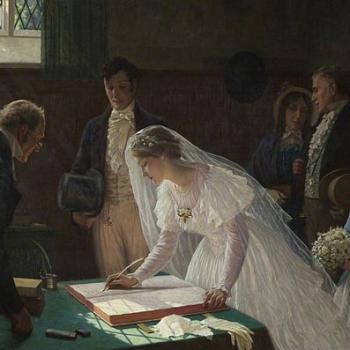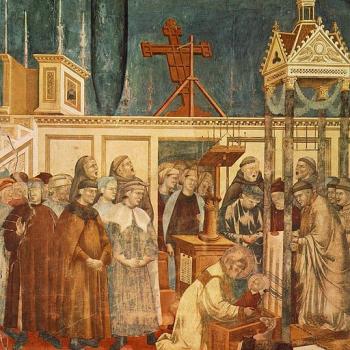[Updated 01/16/2018: there was some bad html that was preventing part of this post from appearing. Hopefully, it has been fixed. DCU]
I finally got a chance to read Angela Nagle’s small book, Kill All Normies. It came out last summer, but the library never bought a copy and I was too lazy to use inter-library loan, so my wife bought it for me for Christmas. (In passing let me give a shout out to the publisher, Zero Books. They seem to have an intriguing catalog.) The book generated a lot of online discussion and criticism when it appeared as its author lobs attacks at not only the right but also at the left. The book is an analysis of the online culture that has evolved and spilled into the mainstream in the past 15 years. It digs into some of the darker corners of the internet–reddit, 4chan, tumblr, and their neighbors–and lays out the ways in which the culture wars of the 90s migrated online, sparking a polarized environment out of which the “alt right” emerged and which fed (among other things) the election of Donald Trump and the rebirth of overt white supremacy in America. She calls the right on many things, but focuses on its misogyny; the examples she discusses are gut-wrenching. The author is also unsparing in her critique of what she calls the “tumblr left”, which she describes, quoting Adolph Reed, as not “believ[ing] in actual politics anymore, just bearing witness to suffering.” She faults it (in contrast to the “materialist left” which she identifies with) for ignoring issues related to economics and focusing exclusively on cultural and identity issues, in which virtue signaling on key issues is necessary to maintain one’s standing in the community.
Here ultimate conclusion is that both left and right (in different ways and toward different ends) have embraced the aesthetic of transgression and counter-culture that emerged in the 60s, though as she documents has a much longer lineage. This “style” which found virtue in being shocking and challenging mainstream sensibilities and orthodoxies,was a useful tool in shaking up the status quo, but suffers from the critical flaw that it is all about form and not content. As the alt-right has proved, it is just as easy to be transgressive to the right as it is to the left. A particular strength is that while she calls out both right and left, she does not engage in shallow equivalences–they are not alike and she does not simply say that one is as bas as the other. One shortfall in her argument is that she does not really address the related question of “fake news” which has plagued the right and left for more than a decade. How do attacks on mainstream media tie into this more general attack on mainstream mores?
The book is really an extended essay, and has all the virtues and faults of that form. It is packed with interesting ideas, but the arguments are themselves often under-developed. This can be annoying, but it does leave room for thoughtful reflection by the reader. There is no critical apparatus (footnotes, bibliography, etc.) and the text is filled with large numbers of names and references. Even though I am somewhat familiar with the online cultures she describes (having two sons who are online junkies), I found that having my laptop open to Wikipedia was essential in reading the text.
I do not want to discuss her argument in detail: instead I strongly recommend it to my audience. However, as I was reading I was led to think about the related Catholic culture wars on the internet, particularly since this blog, Vox Nova, was born as a reaction to them. Though not directly mentioned in our foundational post of May 16, 2007, Vox Nova was at least partly intended to counter a particular Catholic narrative then in the ascendancy, one which combined a certain kind of orthodoxy with American exceptionalism and uncritical acceptance of capitalism and “free enterprise.” One of the founders, who blogged here as Morning’s Minion, described it thus in a recent article on Commonweal:
Over a decade ago, I was one of the co-founders of a small Catholic blog called Vox Nova. The goal of the blog was precisely that—to be a “new voice” for authentic and consistent Catholic social teaching. Most of us on that blog hewed to traditional teaching on social justice and were identified with the Catholic left. But we also tried hard to be consistent—we didn’t disdain Humanae Vitae, ignore abortion, call for women priests, or denigrate Church teachings on sexuality. In doing so, we sought to challenge the presumptions of those who monopolized the mantel of “faithful, orthodox Catholicism.” We were attacked relentlessly for exposing their inconsistency. But in an ocean of right-wing Catholic opinion, Vox Nova was easily drowned out, in the end making only the tiniest of ripples.
I joined the blog somewhat later, in late 2010, after reading it for a while, and looking at my first posts I think I can recapture some of the zeitgeist that attracted me. I wrote about slavery and the death penalty, about Planned Parenthood, and in one very controversial post I satirized Catholic integralism with a post praising Franco. I think I was pushing back against a certain definition of Catholic that I felt was too narrow, too uncritical in its acceptance of the paradigms of the political right, and failed to critically engage with all of Catholic social teaching. As I wrote in my very first post:
So the question becomes: how do we teach the fullness of our faith, including the parts many of our bishops do not want to spend much time talking about?
In those first years there was a fair degree of controversialism: the blog was active, and we often were responding to topics of immediate interest, for example, Raymond Arroyo’s defending torture on EWTN, or Cardinal Dolan being asked to give the benediction at the Republican National Convention. (This post got me my five minutes of fame as I was interviewed on the radio by a conservative political commentator in response.) The blog has changed over the years, and our current batch of bloggers tend to write longer, more reflective posts that a relevant, but not quite so topical.
I must confess, I miss those days, and I wish I had the energy to post that kind of content on a regular basis or that we could find some new bloggers who want to carry on the tradition.
But for now, having read the book, I think it is worth asking to what extent the Catholic internet in the period discussed in Kill All Normies, roughly 2004-2012 but extending into the present, shared in the same evolution, and in what ways it was different. I confess that I have a hard time answering this question, since until I started reading Vox Nova I did not know much about the Catholic blogosphere, and even after I came here I did not delve deeply into it. I knew places to look for certain things, but on specific topics I tended to rely on Google to take me to usable content. I do remember that some blogs, such as American Papist, had a sharp, at times snarky edge. I associated this with the style popularized first by William F. Buckley and later George Will, but perhaps it also shared in the transgressive style which was coming to life elsewhere on the internet. This style still persists: one need only check out Fr. Z’s blog to find it. And while I cannot recall any Catholic site that published factually false news, sites like LifeSiteNews.com tended, in my opinion, to be so biased as to present a distorted picture of reality. (Check out their take on the defeat of Roy Moore in Alabama.)
The Catholic left was badly fractured, and perhaps still is. There were those who, like most of us at Vox Nova, pursued a fuller application of Catholic Social Teaching. But one only need to visit the comment sections at the National Catholic Reporter or Commonweal to see some echoes of identitarian politics and virtue signaling. Certain opinions were required on gay marriage, women’s ordination, and artificial birth control to be a “Catholic liberal” in good standing. (For a current example of this, one which cuts both ways, I recommend Fr. Anthony Ruff’s insightful discussion on “cup” versus “chalice” in the liturgy. It got me thinking about my own defense of “cup” which came up in a powerful comment exchange several years ago.)
A major difference among Catholics of all stripes, I think, is that we were less interested in being transgressive for the sake of shock and outrage. I think this is partly because we held a common ground of being in mother Church. Parties may have disagreed with what the Church was doing, they may have wanted it to move closer to their vision of the ideal (and away from the mistakes and errors of their opponents) but the Church, the mainstream if you will, was an objective reality we could not rebel against without losing a fundamental part of ourselves. “On this rock I will build my Church and the gates of Hell will not prevail against it” applies as much on the internet as it does in the real world and despite my title, there was no drive to kill Catholic normies.
In conclusion, I would love to have this post gather lots of comments (again like in the early days). What have I missed about the evolution of the Catholic presence on the internet, good and bad? Are there other trends that should be considered?

















